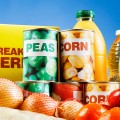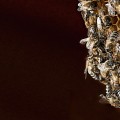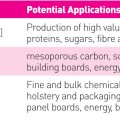Environmental microplasticsA danger to human health? - von Prof. Dr. Gerd Liebezeit
Humans create their own environment and since the 1950s, this has increasingly included products made from synthetic polymers, commonly referred to as "plastics". Plastic waste in the environment is probably here to stay for decades – if not centuries. But can we actually remove plastics – and microplastics in particular – from the environment?
 Environmental risk factorsEnvironmental risk factors and developmental windows of disease and disease prevention - von Prof. Dr. Günter Vollmer
At every stage of their life – from conception to death – organisms are exposed to a multitude of environmental factors, some of which are associated with severe health risks. Current research is now attempting to clarify the significance of particularly sensitive periods of the development of organisms, known as “developmental windows of disease”. Within these windows, there is an increased chance of specific types of changes to occur which...
 Take a look at HPLC 2014 New Orleans
Check out what's new at HPLC 2014 New Orleans, the largest global, multidisciplinary Liquid-phase Separations Conference & Expo of the Year! This exciting event covers all areas of liquid-phase separations in multiple disciplines and features strong content, expanded program of the world's experts, training programs, poster sessions, largest comprehensive exhibition of its kind, and abundant networking opportunities! If you want to learn about new...
 MOSH/MOAH food contaminationFocus on mineral oil residues - von Prof. Dr. Reinhard Matissek, Dr. Marion Raters, Anna Dingel, Julia Schnapka
Mineral oils are almost universally present in our environment. Their constituents can infiltrate foods of both plant and animal origin in many different ways. From the perspective of their chemical structure, the main compounds of interest are mineral oil saturated hydrocarbons (MOSH) and – to a proportionally lesser extent – mineral oil aromatic hydrocarbons (MOAH).
 Characterization of Algal Organic Matter and their Biofuels Potential in Abu Dhabi, United Arab EmiratesAlgae as Biodiesel Source - von Prof. Dr Fares M. Howari
The need for alternative fuel sources is urgent as evinced by the worldwide declining of major hydrocarbon reservoirs, the high demand on hydrocarbon and associated environmental problems. Algae based biofuels or biodiesel are among the strongest options to serve as an alternative source of hydrocarbon. Biodiesel burns 50% cleaner than conventional petroleum-derived diesel [1] and can be used in any diesel engine with little to no...
 HOBOS’ Prominent Patronessvon Dr Nizar Haddad, Princess Basma bint Ali
The story of HOBOS started with a successful book entitled “The Buzz about Bees” written by Prof. Dr. Jürgen Tautz in 2008. This unique book about the superorganism (the honey bee colony) was translated into 15 languages within one year. One of these languages was Arabic. It was translated by Dr. Nizar Haddad, a scientist from the Hashemite Kingdom of Jordan. The Arabic translation of the book won a prestigious award in applied and basic sciences....
 Learning from honeybees: live observation in the beehiveLight in the Darkness - von Prof. Dr Jürgen Tautz, Bernhard Schneider, Kristina Vonend
Inside a beehive it is warm – and utterly dark. The hive members function like a highly complex organism. Some 50,000 individuals live cheek-by-jowl and yet still have room to move. Thanks to the ingenious division of labour, it’s more a case of "busy as a hive" than "busy as a bee". Usually, what occurs in a beehive remains hidden from human view. Not so with HOBOS (HOneyBee Online Studies), the online research platform launched by our team....
 Non-target screening, suspected-target screening and target screening – of technologies and philosophies, databases and craftsDetective work with molecular accuracy - von PD Dr Thomas Letzel
The three terms in the title, as well as “Known Unknowns” and “Unknown Unknowns” are new keywords that are currently confusing the analytical water scene. The procedure in use of just these technologies, however, often is not consistent yet. This article will now try to put the many different terms and approaches into some semblance of order. At the same time, it will report on pragmatic applications.
 Biowastes: a new feedstock for the chemicals industryValuable Waste - von Dr Mark Gronnow, Dr Margaret Smallwood
The chemicals industry has been wedded to fossil resources for the past hundred and fifty years, but times are a-changing. As the price of oil increases inexorably and environmental impact rises on the policy and regulatory agenda, industry leaders are starting to exploit new, more sustainable feedstocks for the manufacture of fuel and chemicals. Squarely in the frame as potential feedstocks are the vast tonnages of biowastes produced each...
 Instrumental and effect-directed analysis in the oxidative degradation of micropollutantsPharmaceuticals in wastewater - von Dr Jochen Türk
Occurance and fate of micropollutants, metabolites and transformation products in the water cycle is placing increasingly higher demands on instrumental analysis in terms of resolution and sensitivity. As yet, effect-directed analysis methods play a subordinate role in water analysis work. Yet for evaluating unknown samples or ingredients, these methods form a perfect complement to instrument-based identification. Indeed, in the detection of estrogenically...
 |
|













